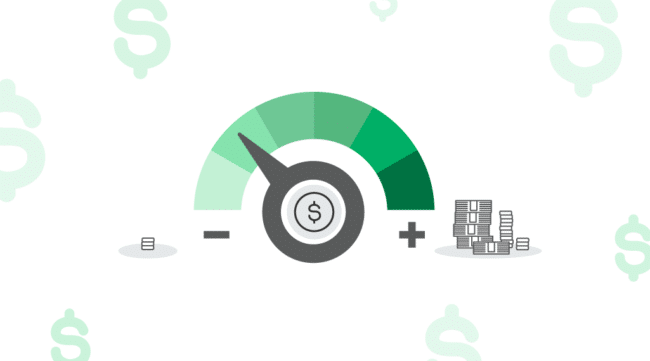
Did you know that businesses using Amazon Web Services (AWS) could potentially reduce their expenses by up to 30% through cost optimization strategies? That’s a significant amount of savings that can be achieved by implementing effective cost management practices on AWS.
As businesses increasingly rely on cloud services like AWS, managing and minimizing costs has become a top priority. Cost optimization on AWS involves finding the right balance between performance and expenditure, leveraging cost-effective solutions, and utilizing AWS tools and services to optimize resource usage.
In this article, we will explore the importance of cost management on AWS, uncover effective cost-saving strategies, and provide valuable insights on how to reduce AWS expenses while maintaining optimal performance. Let’s dive in!
Key Takeaways:
- Cost optimization on AWS can lead to significant savings, potentially up to 30%.
- Balancing performance and cost is crucial when managing expenses on AWS.
- Leveraging cost-effective solutions and utilizing AWS tools and services can enhance cost optimization.
- Implementing effective cost management strategies is essential for businesses relying on AWS.
- Reducing AWS expenses while maintaining optimal performance requires careful resource usage optimization.
The Importance of Amazon Web Services (AWS) Cost Management
In order to maximize savings and optimize costs on AWS, it is essential to have effective cost management in place. By understanding the components of your AWS bill, finding the right balance between performance and cost, implementing strategic cost management practices, and leveraging AWS cost efficiency tools and services, you can achieve significant cost savings without compromising on performance or functionality.
Understanding Your AWS Bill
Your AWS bill consists of various cost components, including compute resources (EC2 instances), storage and data transfer (S3, EBS), network resources (VPC), and other services you use. To gain a comprehensive understanding of your bill, it is important to analyze these components and their associated costs. By identifying the percentage of costs attributed to each component, you can pinpoint areas where cost optimization efforts should be focused.
Finding the Balance: Performance vs. Cost
When optimizing costs on AWS, it is crucial to find the right balance between performance and cost. While it may be tempting to choose the highest-performing resources, they often come at a higher cost. By carefully assessing your workload requirements and considering alternative resource options, you can optimize costs without sacrificing performance. This includes evaluating the service level agreements (SLAs) and performance guarantees of different AWS services and selecting the most cost-effective options that meet your needs.
Benefits of Strategic Cost Management
Implementing strategic cost management practices offers several benefits for your AWS environment. Firstly, it enables you to forecast and budget your AWS expenses effectively, ensuring that you stay within your allocated budget. Secondly, it allows you to identify cost-saving opportunities, such as rightsizing underutilized resources. Thirdly, it helps you optimize your usage patterns and resource allocation to minimize unnecessary costs. Lastly, strategic cost management ensures that you have transparency and visibility into your AWS spending, enabling you to track and analyze costs efficiently.
Leveraging AWS Tools and Services for Cost Efficiency
AWS provides a variety of tools and services specifically designed to help you optimize costs. These include:
- AWS Cost Explorer: A comprehensive cost management tool that provides insights into your AWS spending, allowing you to analyze costs and forecast usage.
- AWS Trusted Advisor: Offers recommendations for cost optimization, security, and performance improvements based on AWS best practices.
- AWS Savings Plans: Allows you to save up to 72% on your AWS compute usage by committing to a consistent usage over a one or three-year period.
- AWS Compute Optimizer: Analyzes the utilization of your EC2 instances and provides recommendations for rightsizing, helping you eliminate over-provisioned resources.
- AWS Cost Anomaly Detection: Automatically detects and alerts you of any unusual spending patterns, helping you identify and address unexpected costs.
By utilizing these AWS tools and services, you can streamline your cost optimization efforts and achieve greater cost efficiency across your AWS environment.
| Tool/Service | Key Benefits |
|---|---|
| AWS Cost Explorer | Comprehensive cost management and analysis |
| AWS Trusted Advisor | Cost optimization, security, and performance recommendations |
| AWS Savings Plans | Significant savings on AWS compute usage |
| AWS Compute Optimizer | Rightsizing recommendations for EC2 instances |
| AWS Cost Anomaly Detection | Alerts for unusual spending patterns |
Cost Optimization on AWS
When it comes to managing costs on Amazon Web Services (AWS), it’s crucial to implement effective strategies for cost optimization. By doing so, businesses can reduce their AWS expenses while optimizing resource usage for maximum efficiency. In this section, we will explore various cost optimization strategies, delve into best practices for AWS cost optimization, and provide tips and techniques for reducing AWS expenses.
One of the key cost optimization strategies on AWS is rightsizing your resources. By understanding the specific resource requirements of your applications and services, you can allocate the necessary resources without overprovisioning. This ensures efficient resource utilization and minimizes costs.
Another important aspect of cost optimization is taking advantage of AWS cost optimization best practices. This includes selecting the most cost-effective AWS services and pricing options, leveraging EC2 Spot Instances for workload flexibility, and utilizing AWS Cost Explorer and Trusted Advisor for cost analysis and recommendations.
Furthermore, optimizing AWS resource usage can play a significant role in reducing costs. This involves monitoring and analyzing resource utilization, identifying and eliminating idle resources, and implementing auto-scaling to dynamically adjust resource allocation based on workload demands. By optimizing resource usage, businesses can avoid unnecessary expenses and achieve better cost efficiency.
In addition, there are several techniques that can help in reducing AWS expenses. These include optimizing storage costs by selecting the most appropriate storage class, implementing data lifecycle policies, and using cost-effective backup and archive solutions. Additionally, businesses can optimize data transfer costs by leveraging AWS Direct Connect and Content Delivery Network (CDN) services.
In summary, cost optimization on AWS is crucial for businesses to maximize savings and ensure efficient resource usage. By implementing cost optimization strategies, following AWS best practices, and optimizing resource usage, businesses can reduce AWS expenses while maintaining optimal performance and scalability. By continuously monitoring and optimizing costs, businesses can achieve long-term cost savings and budget optimization on AWS.
Conclusion
In conclusion, cost optimization on Amazon Web Services (AWS) is a crucial aspect of any organization’s cloud strategy. By implementing effective cost management practices, businesses can significantly reduce AWS expenses while still maintaining optimal performance and scalability.
Throughout this article, we have emphasized the importance of understanding your AWS bill and finding the right balance between performance and cost. By closely monitoring your AWS resource usage and leveraging the range of AWS tools and services available, you can proactively identify areas for optimization and implement cost-saving strategies.
By optimizing costs on AWS, businesses can maximize their savings and allocate resources more efficiently. However, it is essential to regularly evaluate your cost optimization strategies and adapt them as your cloud usage evolves. By continuously striving for cost efficiency on AWS, you can achieve long-term benefits and stay ahead in today’s competitive landscape.
As a final recommendation, we encourage businesses to seek professional guidance or consult AWS experts to ensure they are utilizing the most effective cost optimization solutions for their specific needs. Together, we can unlock the full potential of AWS cost management and drive significant business value in the cloud.
Unlock Your Savings with DinoCloud’s AWS Cost Optimization Expertise
Are you ready to transform your AWS expenditure into a strategic asset for growth? DinoCloud is here to guide you through the complexities of AWS cost optimization. As an AWS Premier Tier Services partner, we specialize in leveraging the power of AWS to maximize your operational efficiency and secure significant savings. With our proven strategies and deep expertise, we tailor solutions that not only reduce costs but also enhance the performance and scalability of your AWS infrastructure.
FAQ
How can cost optimization on AWS help businesses?
Cost optimization on AWS is essential for businesses as it allows them to reduce AWS expenses and maximize savings. By implementing cost management strategies, businesses can ensure cost-effective AWS solutions and minimize AWS costs, resulting in improved financial performance.
What are the components of an AWS bill?
An AWS bill consists of several components, including usage fees for AWS services, data transfer fees, storage costs, and any additional fees for optional services and resources. Understanding these components is crucial for effective cost management on AWS.
How can businesses find the balance between performance and cost optimization on AWS?
Finding the balance between performance and cost optimization on AWS requires businesses to analyze their specific requirements and choose the right AWS services and resources accordingly. By selecting the most cost-effective options that meet their performance needs, businesses can achieve an optimal balance between performance and cost.
What are some cost optimization strategies on AWS?
There are several cost optimization strategies businesses can implement on AWS, such as rightsizing instances, implementing auto scaling, leveraging spot instances and reserved instances, utilizing AWS Lambda for serverless computing, optimizing storage costs, and monitoring and managing data transfer costs. These strategies help businesses reduce AWS expenses and optimize their cost management efforts.
What are the best practices for cost optimization on AWS?
To achieve cost optimization on AWS, businesses should regularly monitor their AWS resource usage, set up an effective cost allocation strategy, take advantage of AWS cost monitoring and alerting services, use instance scheduling and automation to reduce idle resource costs, optimize database usage, employ serverless computing where appropriate, and continuously evaluate and adjust their AWS architecture to optimize costs.
How can businesses reduce AWS expenses?
Businesses can reduce AWS expenses by implementing the following techniques: optimizing resource utilization, selecting appropriate instance types, using reserved instances for consistent workloads, optimizing storage costs, leveraging spot instances for fault-tolerant and flexible workloads, implementing serverless computing, managing data transfer costs, and regularly reviewing and optimizing AWS architecture.




